1. L&D is Ch-Cha-Changing!
1.1. What's NOT working
1.1.1. Poor visual design skills
1.1.2. Lacking scientific basis
1.1.2.1. Propagating myths
1.1.3. Lacking tie to business KPIs
1.1.4. Failing to capture and USE data
1.2. Need to FOCUS ON
1.2.1. Being Agile
1.2.2. Performance-first Mindset
1.2.3. Offering bespoke learning concierge service
1.3. Need to BE
1.3.1. Storytellers
1.3.2. Experimenters
1.3.3. Being Science- and evidence-based
1.3.4. Tech Ready & Tech Adopters
1.3.5. Business focused and aligned
1.4. Need to LEARN
1.4.1. Intelligent Curation
1.4.2. Visual Design
1.4.2.1. Show don't tell
1.4.2.2. Storyboard
1.4.3. Marketing
1.4.4. Game theory
1.4.5. Nudge Theory
1.5. Need to Assess NEW OPPORTUNITIES
1.6. Learning Engineers
1.6.1. Knowledge Domain Modeling
1.6.2. Activity Modeling
1.6.3. Learner Modeling
1.6.4. Instrumentation
1.6.5. Design & Development
1.6.6. Data Analytics
1.6.7. Iterative Improvement
2. Learning is speeding up requiring...
2.1. Better Pathways
2.2. Better Curation
2.3. Better Insights
2.4. Better Learners
2.4.1. Learning is earning
2.4.2. Learning culture
2.4.3. Growth mindset
2.5. More Experience
2.6. More Connections
3. Measurement could be so much better...
3.1. Unobtrusive Measurement
3.1.1. IoT
3.1.2. Wearables
3.2. Focus on the goal!
3.2.1. Performance-first measures
3.2.2. Gather ENOUGH data to make a decision
3.2.3. Determine at onset outcomes and behaviors
3.2.4. Tie to business KPIs and how L&D moves needle
3.3. Data Visualization & Storytelling
3.3.1. What stakeholders care about
3.3.2. Decisions I can influence
3.3.3. Best way to convey
3.4. No Data or Lack of Data
3.4.1. Share why it is important
3.4.2. Try free 12-week xAPI workshop w/ Megan Torrence
3.4.3. Share what have data can do
3.5. Learning & Performance Data
3.5.1. Social - Individual
3.5.2. Predictable - Variable
3.5.3. Learning - Performance
3.5.4. Formative - Summative
3.5.5. Learner - Observer - Environment
3.6. ...because we have tremendous digital exhaust
3.6.1. Code Halo
3.6.1.1. Experiences
3.6.1.2. Choices
3.6.1.3. Preferences
4. Emerging Technologies
4.1. Blockchain
4.2. AR/VR
4.2.1. Haptic control
4.2.1.1. 62% have more positive reaction to videos w/ touch-sense component
4.3. Smart Automation
4.3.1. Artificial Intelligence (AI)
4.3.1.1. @SophiaTheRobot
4.3.1.2. Assessment
4.3.1.2.1. Verity talent skills
4.3.1.2.2. Determine skills needed
4.3.1.2.3. Three assessment types
4.3.1.3. Requires
4.3.1.3.1. Big Data
4.3.1.3.2. Feedback Loops
4.3.1.3.3. Humans to make relevant
4.3.1.4. Machine Learning
4.3.1.4.1. Supervised Learning
4.3.1.4.2. Unsupervised Learning
4.3.1.4.3. Reinforcement Learning
4.3.1.5. Deep Learning (aka Neural Networks)
4.3.1.5.1. Financial
4.3.1.5.2. Medicine / Healthcare
4.3.1.5.3. Manufacturing
4.3.1.6. Natural Language Processing (NLP)
4.3.1.6.1. Chatbots
4.3.1.6.2. Voice-first Devices
4.3.2. Remote Process Automation (RPA)
4.3.2.1. PwC trains & incentivizes all employees to build RPAs
4.3.2.1.1. Database portal filtered by business function
4.3.2.2. Process
4.3.2.2.1. 1. Standardize processes
4.3.2.2.2. 2. Optimize the process
4.3.2.2.3. 3. RPA automation
4.3.2.2.4. 4. Intelligent automation - AI, ML, DL,
4.3.2.3. Good for transactional & low judgment items
4.4. 5G
4.4.1. Increase digital engagement
4.5. Cloud
5. What NOT to do
5.1. Develop innovation anxiety
5.2. Ignore emerging technologies
5.3. Fail to develop your skills
5.4. Fail to ask "what do I do today that could be automated?"
5.5. Fail to use data because of fear of what it will tell you
5.6. Think automation can't happen in L&D
5.7. Only look in the learning space for innovations
5.8. Ignore data insights - if we won't do it, other disciplines will
5.9. Promote neuro- and learning myths
6. Learners are changing too!
6.1. Less time
6.2. Expect a consumer experience
6.3. Expect to learn informally
6.4. Expect great UX/UI
6.5. Expect they'll need to reskill
6.6. Learning from everywhere...except usually not your LMS
6.6.1. MOOCs
6.6.2. Podcasts
6.6.3. LinkedIn
6.6.4. Books
6.6.5. Conversations
6.7. They are self...
6.7.1. Self-directed
6.7.2. Self-reliant
6.7.3. Self-sufficient
7. New World of Work Learning
7.1. Recommendations, Adaptive & Personalized Learning
7.1.1. Technologies
7.1.1.1. CMI
7.1.1.2. xAPI
7.1.1.2.1. What will replace SCORM
7.1.1.2.2. x = Experience
7.1.1.2.3. 5 Ways to Send Data
7.1.1.2.4. Requires
7.1.1.3. AI
7.1.2. Make sure you...
7.1.2.1. Maintain choice
7.1.2.2. Use nudge theory
7.1.2.2.1. Positive reinforcement
7.1.2.2.2. Indirect suggestions
7.1.2.3. Reward & recognize
7.2. Workflow Learning
7.2.1. Workflow enabled by Technology
7.2.2. Five Moments of Need (5MoN)
7.2.3. Learning WHILE working, not learning IN the workflow
7.2.3.1. Always performance focused
7.2.3.2. I teach you, you teach me
7.3. Intelligent Curation
7.3.1. It's more than content
7.3.1.1. Experiences
7.3.1.2. Connections
7.3.2. Challenges
7.3.2.1. Speed
7.3.2.2. Scale
7.3.2.3. Losing context
7.3.2.4. Dated learning paths
7.3.2.5. Determining trusted sources
7.3.2.5.1. Skillsoft
7.3.2.5.2. Lynda
7.3.2.5.3. Pluralsight
7.3.2.5.4. Thought-leaders
7.3.3. Goals
7.3.3.1. Prioritized
7.3.3.2. Personalized
7.3.3.3. Relevant
7.3.3.4. Contextual
7.3.4. Learning curation is NOT
7.3.4.1. Netflix echo chamber or keyword categorization
7.3.4.2. Driven by AI - It's driven by people, done by AI
7.4. Gamification
7.4.1. Gameplay mechanics to non-game situations
7.4.2. Used to reward innovation and participation
7.4.3. Octalysis "Analysis framework for motivation & associated forces w/in specific context"
7.4.3.1. Meaning
7.4.3.2. Empowerment
7.4.3.3. Social Pressure
7.4.3.4. Unpredictability
7.4.3.5. Avoidance
7.4.3.6. Scarcity
7.4.3.7. Ownership
7.4.3.8. Accomplishment
8. Keynotes
8.1. Kate O'Neill - Tech Humanism
8.1.1. Dichotomy
8.1.1.1. Tech for Humans
8.1.1.1.1. Tech drawing out positive human behavior
8.1.1.1.2. Tech in the service of humans
8.1.1.2. Tech for Business
8.1.2. How to Solve
8.1.2.1. Grow our Businesses
8.1.2.2. Build our best tech
8.1.2.2.1. Tech is starting to indicate meaning and connections
8.1.2.2.2. Tech can teach us to be less human
8.1.2.3. Grow our best selves
8.1.2.3.1. Humans crave meaning & it is how we see the world
8.2. Sophia the Robot - Artificial Intelligence & Learning
8.2.1. Worry about how people training the robots, not the robots
8.2.2. Robots will help humans live and work better
8.2.2.1. Take high risk roles
8.2.2.2. Don't get fatigued
8.2.2.3. Consistency & Repetitive tasks
8.3. Talithia Willaims - Using Data to Inform Learning & Work
8.3.1. Four V's
8.3.1.1. Volume
8.3.1.2. Veracity
8.3.1.3. Velocity
8.3.1.4. Variety
8.3.2. Future filled with...
8.3.2.1. Choice
8.3.2.2. Ownership
8.3.2.3. Collaboration
8.3.2.4. Personalization
8.4. Helen Papagiannis - Augmented Human
8.4.1. Augmented Reality (AR)
8.4.1.1. Visualization
8.4.1.2. Annotation
8.4.2. Wearables
8.4.2.1. Clothing
8.4.2.2. Devices
8.4.2.3. Calming Tech
8.4.3. Senses are being engaged through....
8.4.3.1. Haptics
8.4.3.2. Proprioception
8.4.3.3. Smell
8.4.3.4. Taste
